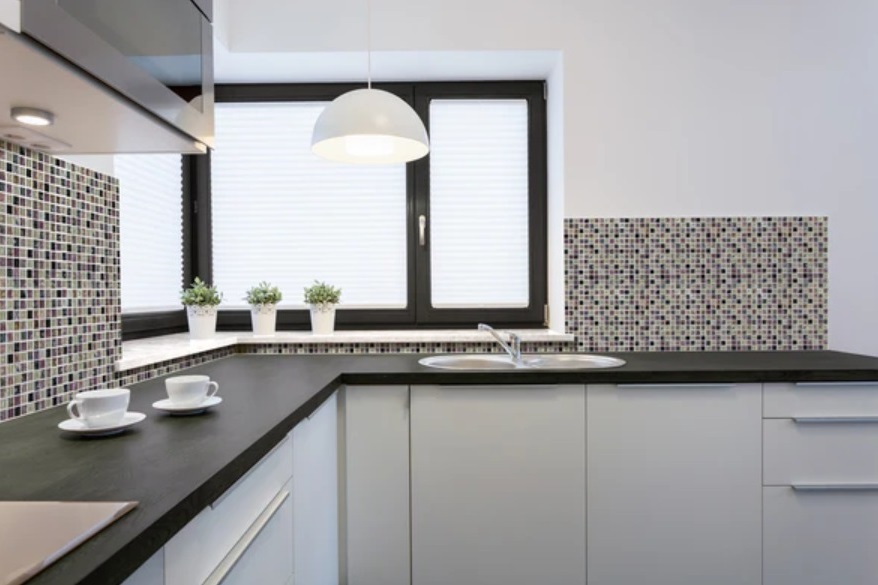The use of mosaic tiles for kitchen and bathroom projects has gained popularity due to their durability, aesthetic appeal, and historical significance in interior design. Mosaics are an intriguing art form that has captivated people for centuries with their versatile designs and vibrant colors. Essentially, a mosaic is a pattern formed by assembling numerous small pieces together, allowing for endless artistic possibilities. The earliest mosaics were crafted from pebbles, and later on, carved pieces of stone or glass. These small pieces that comprise a mosaic are called tesserae. Today, mosaics can be created using various materials such as glass, ceramics, and even bottle caps.
While tiles, in general, are a great option for home installations, mosaics offer the added advantage of flexibility in design. Unlike many other art forms, mosaics are often designed to be walked on or used as interior decorations. Therefore, they are typically easy to clean, maintain, and have a long lifespan. Mosaics were widely utilized in the Greco-Roman world as floor embellishments.
Should you choose to incorporate mosaic tiles into your home decor, you are participating in an artistic tradition with roots reaching back centuries. The earliest-known mosaics date back to the 3rd millennium BC in Mesopotamia, evolving over time to include intricate patterns and images, particularly around 1500 BC. The development of this art form, primarily as an art form rather than solely a method of laying tiles, can be traced back to Greece.
Ancient Greek mosaics showcased figurative designs depicting mythological themes and affluent individuals indulging in various pastimes. Their designs featured distinct boundaries and were often inspired by painting, the predominant art form of that era. The Romans enthusiastically adopted this art form, and mosaic-adorned Hellenistic villas were a common sight. These Greco-Roman mosaics primarily utilized two techniques: opus vermiculatum, which involved using very small and fine tesserae to create the illusion of painting and fine detailing, and opus tessellatum, which used larger tesserae and was more widely employed.
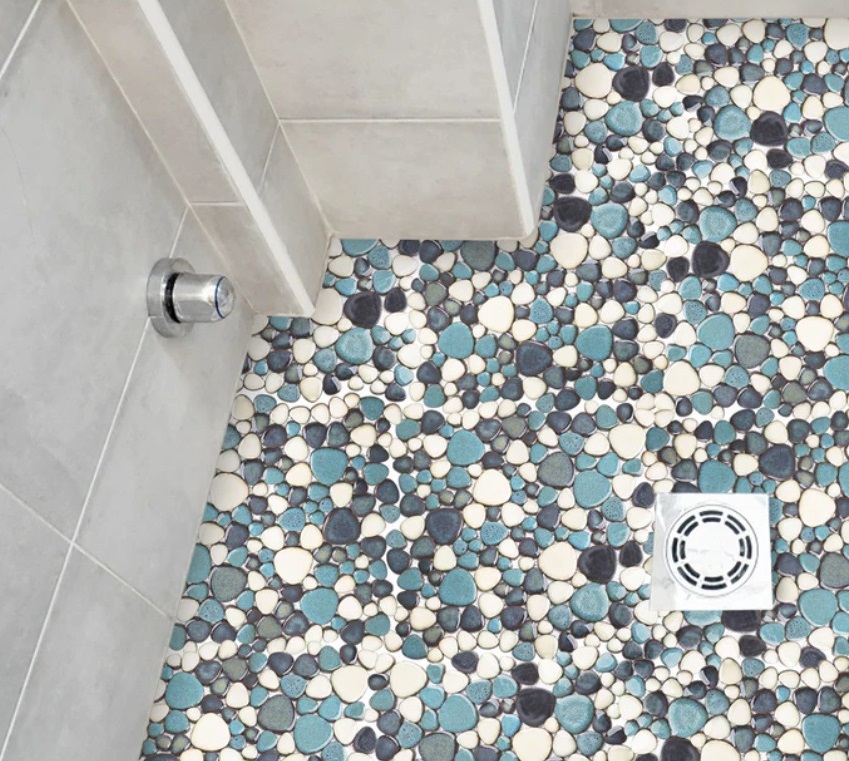
In recent years, mosaic tiles have gained popularity for kitchen and bathroom projects. These small, decorative tiles can create intricate patterns and designs, adding a touch of sophistication and luxury to any space. This article will delve into the reasons behind the surge in popularity of mosaic tiles, the materials commonly used, and frequently asked questions about using them in kitchen and bathroom projects.
Mosaics held significant artistic value in the Christian world, with Ravenna, the former capital of the Western Roman Empire, emerging as a hub of mosaic art. Scenes and figures depicted in mosaic art became commonplace in adorning churches and chapels, forming an extensive and rich history within Christian art. Many churches were adorned with mosaic art employing glass, precious stones, and gold to produce striking effects.
The popularity of mosaics gradually spread worldwide, giving rise to various styles and techniques, including the intricate geometric patterns and designs of the Byzantine era, where figurative representation was regarded as a form of idolatry. While many Byzantine mosaics have been lost due to conquests and wars, the surviving pieces present a remarkable collection. These geometric patterns are particularly favored in Islamic designs and are commonly found in mosques globally. Mosaic tiles were a predominant form of wall decoration in the Islamic tradition and were utilized in one of the earliest religious buildings, the Dome of the Rock in Jerusalem. Although it is no longer as prevalent as it once was, this style of art persists in many parts of the Arab world today, reflecting its enduring legacy.
Numerous synagogues have also been discovered to contain mosaic art. The Byzantine Jews did not strictly adhere to the prohibition against figurative representation, and as a result, many of their mosaics feature depictions of humans and animals.
Reasons for the Popularity of Mosaic Tiles:
Mosaic tiles are well-liked for kitchen and bathroom tile projects due to several factors. They are adaptable, long-lasting, and come in various materials, colors, and patterns. By carefully planning and taking into account the right factors, mosaic tiles have the potential to help in the creation of a functional and stunning area that will be valued for an extended period.
- Versatility:
The versatility of mosaic tiles is a major factor contributing to their popularity. They can be utilized in various ways, such as creating a kitchen backsplash, a bathroom shower wall, or even as flooring. They can also be used to craft unique designs like a feature wall or a room perimeter border.
- Durability:
Another reason for the popularity of mosaic tiles is their durability. Many mosaic tiles are constructed from tough materials such as glass or ceramic, offering resistance to everyday wear and tear. Additionally, mosaic tiles are commonly used in wet areas, making their small size and interlocking nature advantageous for water resistance.
- Eco-friendly:
Mosaic tiles are also favored for their eco-friendly qualities. They are often made from natural materials like glass, marble, or ceramic, which are recyclable or can be repurposed. Additionally, many mosaic tile manufacturers employ sustainable production methods, such as utilizing recycled materials or reducing energy consumption.
- Improved air quality:
Mosaic tiles offer the added benefit of improving air quality, as they are made from natural materials that do not emit harmful chemicals or toxins into the air. This can be especially advantageous in kitchens and bathrooms where air quality may be compromised due to cooking and cleaning activities.
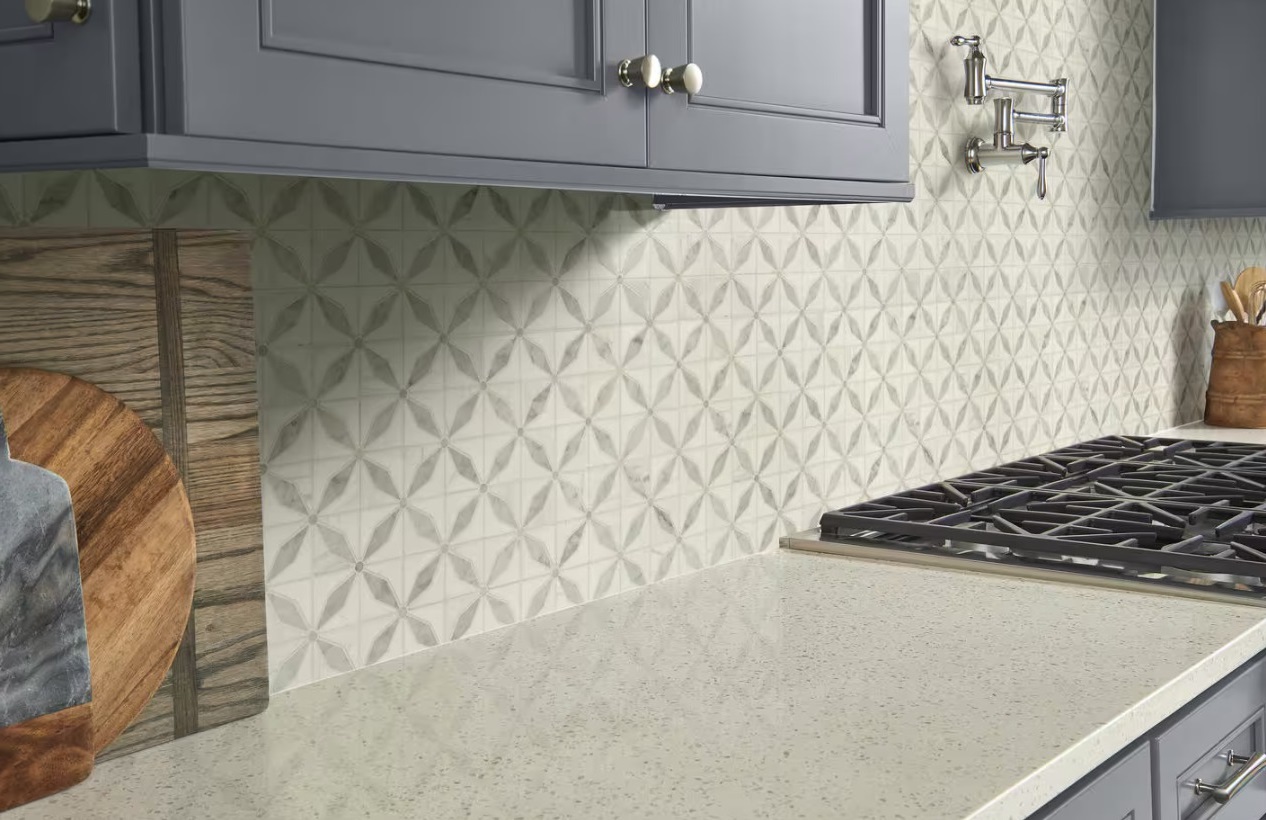
- Enhances the property’s resale worth:
Furthermore, mosaic tiles can enhance the resale value of your home. They are often considered a luxurious and stylish option for home renovation projects, contributing to the overall value of the property.
- Low Maintenance:
Mosaic tiles are easy to maintain, making them a great choice for high-traffic areas. Their durability and resistance to wear and tear make them an excellent option for kitchen and bathroom floors. Additionally, they are easy to clean with a damp cloth or mop, making them suitable for busy households.
- Moisture and moisture resistant:
Mosaic tiles are also resistant to moisture and water, making them ideal for bathrooms and kitchens. They are unaffected by water or moisture and are not prone to mold or mildew, making them a suitable choice for these areas.
- Comfort and safety when walking:
Mosaic tiles provide a comfortable, non-slip surface for walking, ensuring safety and comfort. They offer a comfortable and safe surface, making them a suitable choice for kitchen and bathroom floors.
Popular Materials for Mosaic Tiles:
Several materials are popular for mosaic tiles, including glass, marble, and ceramic.
Glass mosaic tiles:
Glass mosaic tiles are a popular option for kitchen and bathroom projects due to their variety of colors and patterns, durability, and ease of cleaning. Their resistance to moisture and water makes them well-suited for these areas.
Marble mosaic tiles:
Marble mosaic tiles are also favored for kitchen and bathroom projects due to their variety of colors and patterns, durability, and ease of cleaning. They also offer resistance to moisture and water, making them a suitable choice for these areas.
Ceramic mosaic tiles:
Ceramic mosaic tiles are a popular choice for kitchen and bathroom projects due to their variety of colors and patterns, durability, and ease of cleaning. They are also resistant to moisture and water, making them suitable for bathrooms and kitchens.
Benefits of Using Mosaic Tiles:
Aesthetic Appeal: Mosaic tiles offer a wide range of colors, patterns, and designs, making them an excellent option for creating a distinctive and customized look in any room. They can produce elaborate designs and patterns, adding a sense of sophistication and style to any kitchen or bathroom.
Safety: Mosaic tiles provide a comfortable and safe non-slip surface for walking, making them suitable for kitchen and bathroom floors.
Durability: Mosaic tiles are robust and can withstand years of use without displaying signs of wear and tear, making them a smart investment for any home improvement project.
Easy Installation: Mosaic tiles are simple to install and can be undertaken by most DIY enthusiasts. They are available in pre-cut pieces that are easy to install, streamlining the installation process.
Waterproof: Mosaic tiles are impervious to water, making them an ideal choice for bathroom and kitchen areas. They are unaffected by water or moisture and are not prone to mold or mildew, making them an excellent choice for these spaces.
Cost-effective: Mosaic tiles are a budget-friendly option for home improvement projects. They are less costly than other tile options and are available in a variety of price ranges to accommodate every budget.
Easy to repair: Should a mosaic tile break, it is easy to replace, unlike other tile options that can be challenging and expensive to repair.
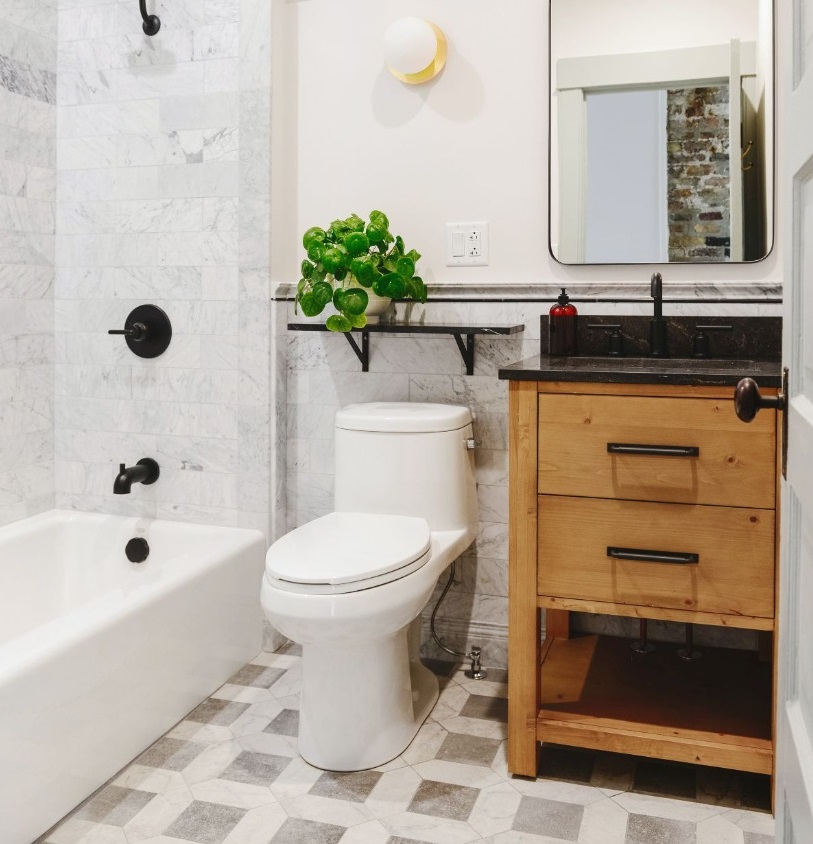
Important Considerations Before Buying Mosaic Tiles:
When selecting mosaic tiles for your kitchen or bathroom project, several factors should be taken into account.
It is crucial to contemplate the overall design style of the room. Different materials of mosaic tiles may be better suited to specific design styles. For instance, glass mosaic tiles can create a modern, sleek look, while marble mosaic tiles can impart a touch of luxury and elegance.
Another vital consideration is the color and pattern of the mosaic tiles. Given the variety of colors and patterns available, it is important to choose those that complement the overall design of the room.
Additionally, when choosing mosaic tiles for your kitchen or bathroom, take into account the amount of natural light the room receives, as this can influence the appearance and final color and pattern choices.
Frequently Asked Questions:
What are mosaic tiles?
Mosaic tiles are small, square or rectangular tiles typically made from materials such as glass, ceramic, or marble. They are often arranged in patterns or designs to create a cohesive and decorative look in any space and are commonly used for floors, walls, and backsplashes.
Are mosaic tiles going out of style?
Mosaic tiles are timeless and continue to be a popular choice for home improvement projects. Their versatility and durability allow for the creation of a unique and personalized look in any room.
Do I need spacers for mosaic tiles?
While not mandatory, spacers are recommended for installing mosaic tiles. Spacers help ensure even spacing and height, contributing to a polished and professional appearance. They also aid in preventing tile shifting or movement during installation.
Can mosaic tiles be used in bathrooms?
Yes, mosaic tiles are commonly used for bathroom walls and floors. Their resistance to moisture and water makes them suitable for wet areas.
Can mosaic tiles be used on kitchen backsplashes?
Absolutely, mosaic tiles are a favored option for kitchen backsplashes, adding an element of luxury and elegance to the space while allowing for unique patterns and motifs.
Mosaic Tiles: Improving Your Decor with Artistic Patterns
Designers have been intrigued by mosaics since they first appeared in Mesopotamia, now known as Iraq, in the third millennium BC. Mosaic tiles are a highly adaptable decorative feature that can be utilized in various ways to produce stunning works of art. From floors and walls to kitchen countertops, the options are limitless. Unleash your creative side with these inspiring mosaic tile patterns. These artistic tiles come in various shapes, sizes, colors, and textures, offering endless possibilities, from a random mix of tiles to intricate patterns.
Interested in incorporating this timeless design into your home? Mosaic tile designs can add a distinctive touch to any room. Discover how to enhance your home scenery with mosaic penstocks moment.

Various Kinds of Mosaic Tiles
When it comes to selecting mosaic tiles for your home, there are numerous choices. under are some of the main types.
Mosaic Tiles Made from Natural Stone
If you aim to replicate the iconic mosaics seen in Ancient Greece, Italy, and Egypt, natural stone is the way to go. These tiles are crafted from genuine stone such as marble, granite, and travertine, offering a timeless appearance and suitability for floors, walls, and backsplashes.
Glass Mosaic Tiles
Available in a range of colors and shapes, glass mosaic tiles are easy to use in interior design and create a striking finish that stands out in any room. They are ideal for bathroom walls and kitchen backsplashes.
Metal Mosaic Tiles
Metal mosaic tiles are an excellent choice for adding a modern, industrial look to your home. They come in various sizes and shapes, such as squares, rectangles, and hexagons, and are suitable for floors, walls, countertops, and more!
Ceramic Mosaic Tiles
Affordable and available in numerous styles, shapes, and colors, ceramic mosaic tiles are perfect for kitchen backsplashes, bathroom floors, and even bathroom walls. They are waterproof and relatively easy to maintain.
Porcelain Mosaic Tiles
Porcelain mosaic tiles offer the appearance of natural stone without the high cost, making them suitable for both interior and exterior use, including walls, backsplashes, bathrooms, and more!
Great Mosaic Ideas for Your Home
We’ve provided an overview of popular rooms that can benefit from mosaic tile designs. However, don’t let that limit your creativity. Mosaic tile designs can be used in any room in your home; here are some stimulating ideas to fuel your creativity.
Bathroom
Using tiles in the bathroom presents the perfect opportunity to incorporate mosaics into your home decor and enhance the serene atmosphere of a refreshing morning shower. Blue-toned glass mosaics work well to create a cool and classic look, while incorporating dark metallic tiles with matching dark tile grout introduces a modern style.
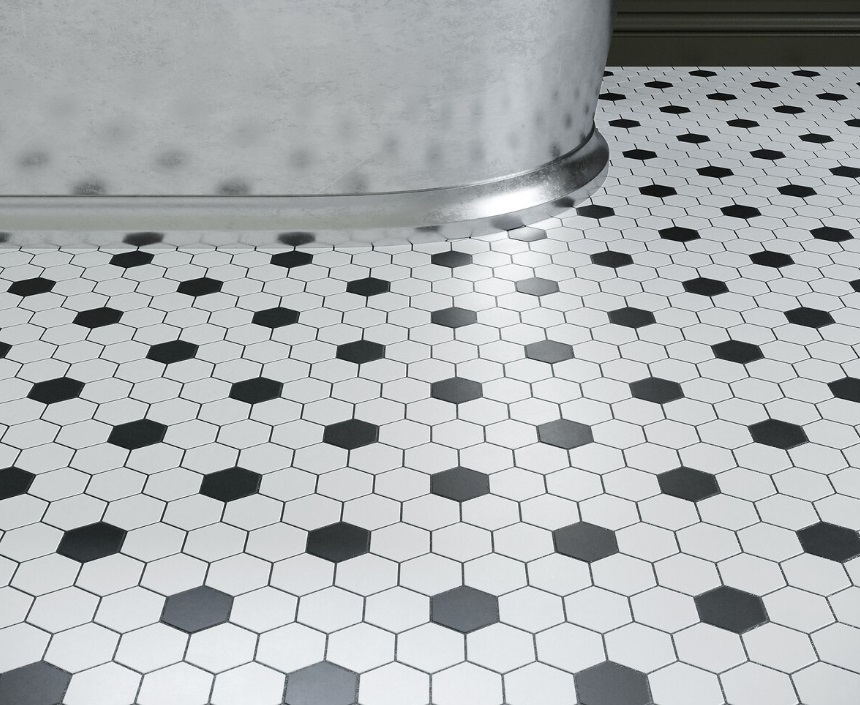
Backsplash
Consider using a backsplash to add color and pattern to your kitchen, tying the colors together or adding brightness. You can opt to cover just the wall behind your sink or have them on all the walls around your kitchen counter.
Garden Terrace
Drawing inspiration from the tile work of southern Spain or Morocco, a covered terrace is essential to their design. Utilize brightly colored, differently shaped tiles with pops of color to create a welcoming outdoor space. Porcelain is an excellent choice due to its durability and high water resistance, lasting longer than other options.
Installing mosaic tiles is simpler than installing standard tiles because cutting the mesh sheets that the tiles are attached to doesn’t require any special tools. Whether you’re completely renovating your kitchen or bathroom, or simply adding a few decorative accents, mosaic tiles are a simple way to instantly add texture and color. If you have the correct tools, installing the tiles is quite straightforward.
Start by gathering your materials. Determine the quantity of mosaic tiles you’ll need. It’s a good idea to estimate a bit more in case of any mistakes or odd shapes or corners that need to be dealt with. Additionally, you will need grout, tile spacers, mortar or adhesive, and a tile cutter.
To fit the mesh sheets into place, measure the area you’ll be covering and cut them with tile cutters. If you don’t have tile cutters, you can also use a utility knife.
Smooth the mortar across the entire surface with a notched trowel. Apply the tiles to the wall one by one. Make sure to leave space between each tile for the grout to fit with the spacers.
Once all the pieces are in place, remove the spacers and fill the gaps with grout. Remember to remove any leftover grout and let it dry thoroughly.
Thoroughly clean the area, sweep, and vacuum any remaining residue. Then apply a sealant to protect the tiles from future spills.
Mosaic tiles are generally relatively easy to maintain. Sweeping and mopping them regularly is the best way to keep them in tip-top condition.
It’s important to clean your tiles immediately after installation. During this time, grout, dust, and dirt will accumulate. This dirt can potentially scratch the tiles.
Sealing your mosaic tiles will help protect them from absorbing dirt and dust. Sealers should be applied at least once a year to ensure the stability of your tiles.
When cleaning mosaic tiles, utilize a pH-neutral soap or detergent mixed with water. Don’t use abrasive tools or any cleaning products on the tiles as they can damage the surface. To prevent discoloration of your grout, avoid using acidic cleaners. Be sure to carefully read and follow the instructions that come with the grout cleaner you choose.
Immediately mop up any spills that occur to prevent staining and damage to the surface of your mosaic tiles.
Re-grouting is necessary to maintain the strength and stability of your mosaic tiles, as well as their aesthetic appeal. Use a grout sealer to cover your penstocks and help abrasion.
Be sure to regularly check your tiles for damage or cracks. If there are any cracks or scratches, you can use a suitable grout to patch them. This will help ensure that your mosaic tiles remain strong and secure.
When moving furniture, be sure not to drag it across your mosaic tiles as this can cause scratches and cracks. Use a wide board to spread the weight of the furniture across multiple tiles if necessary. It is useful to put flannel feet on the bottom of furniture legs so as not to damage the floor.
Innovative Designs Utilizing Glass, Ceramic, and Stone Tiles as Mosaic Art
Mosaic art has been a captivating type of expression for centuries, and its allure continues to charm modern interior and exterior design. The incorporation of glass, ceramic, and stone tiles in mosaic arrangements allows for a variety of styles, from contemporary sophistication to rustic allure. In this blog post, we will delve deeper into each type of tile, exploring their distinct characteristics and potential to generate inspiring mosaic designs.
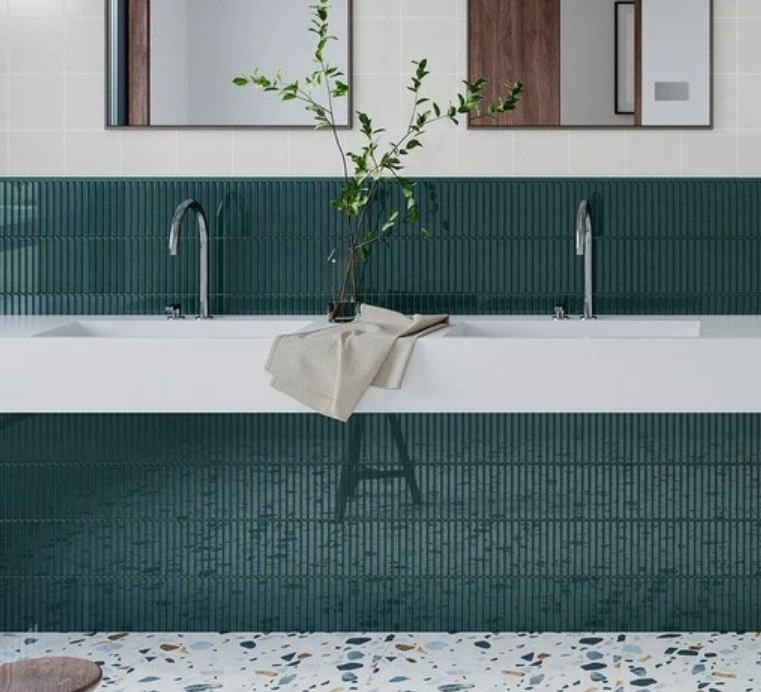
Perfectly Integrating Art into Your Home:
If you appreciate art, it is only natural to adorn your home with mosaic tiles. Envision a mosaic backsplash for your kitchen or bathroom. These are not spaces where you would hang a painting or a picture unless you want it to be damaged, but in mosaics, the art is the tile itself, seamlessly blending with the design of your bathroom or kitchen. The wonderful thing about mosaic tiles is that you can progress from design to actual art that is integrated into the foundation of your home. It is not an added object that is placed anywhere; it harmonizes with the overall aesthetics of your home.
The potential for creativity is vast with mosaics, and it has been simplified with computer-aided design (CAD) capable of creating mosaic tiles. With the aid of this technology, you can select an image and have it reproduced on the tiles to form a mosaic. The image can be fragmented into pixels, which are then applied to individual tiles. This facilitates a more precise design. Furthermore, you do not need to depend on the skills of a craftsman to replicate what you desire. The computer can provide an exact replica of your preference. You can use any type of image on your mosaic tiles. It could be a more contemporary, abstract design, or you could draw influence from the extensive history of mosaics and opt for a more traditional design depicting religious motifs or symbols. It could even be a reproduction of your own artwork.
Instead of a regular design or image, you could contemplate installing a photomosaic if space permits. This is a mosaic composed of numerous images, with an image on each tile. A family portrait on the wall, consisting of numerous photos of your family, would be striking.
Glass Tiles
Introduction of Glass Mosaics
Glass tiles have gained popularity in contemporary design due to their radiant and translucent nature. These tiles are offered in a wide array of colors, finishes, and shapes, providing limitless creative possibilities for designers and homeowners. When light interacts with glass tiles, it generates a captivating interplay of reflections and refractions, enhancing the brilliance of the mosaic and enriching the ambiance of any space.
Enchanting Color Combinations
Glass mosaic tiles can be combined in various color schemes to evoke different moods and emotions. Soft pastels can create a soothing, tranquil atmosphere, while vibrant, vivid colors inject energy and dynamism into a design. Designers can experiment with monochromatic schemes, complementary color pairings, or triad color palettes to achieve the desired impact.
Creating Depth and Radiance
One of the most captivating features of glass mosaic tiles is their capacity to produce depth and radiance. This effect is particularly noticeable in areas with abundant natural light, such as near windows or skylights. Glass tiles are perfect for spaces requiring a touch of sophistication, such as spa-like bathrooms, modern kitchens, or luxurious living rooms.
Mosaic Murals
Glass mosaic murals are a captivating way to infuse a distinctive artistic element into any space. From abstract patterns to lifelike depictions, glass mosaic murals have the ability to transform a blank wall into a stunning focal point. Whether showcased in a commercial space, art gallery, or private residence, these murals become a centerpiece that ignites conversation and admiration.
Ceramic Tiles
Timeless Sophistication
Ceramic tiles have endured as a timeless and resilient option for mosaics. The combination of clay and mineral glaze produces tiles with exceptional durability and resistance to wear, rendering them suitable for high-traffic areas. Ceramic mosaics can impart a touch of sophistication to both traditional and modern interiors, as their classic appeal transcends trends and fashions.
Unleashing Artistic Talent
The art of mosaic is taken to new levels of creativity and expression with hand-painted ceramic tiles. Artisans meticulously create intricate designs, landscapes, and cultural motifs, crafting these tiles. These unique pieces can be used as focal points or integrated into larger mosaic compositions, adding individuality and artistic taste to a space.
Patterns and Textures
Ceramic tiles offer a range of patterns and textures that can enhance the overall design. Geometric patterns like herringbone or chevron bring a sense of order and structure to mosaics. Meanwhile, tiles with embossed relief or raised designs provide tactile appeal and enrich the sensory experience of their surfaces.
Artistic Arrangements
Designers can experiment with different arrangements of ceramic tiles to produce stunning and eye-catching designs. From intricate floral patterns to bold geometric shapes, the arrangement of tiles allows for the creation of a visual narrative that tells a unique story in each adorned space.
Stone Tiles
Natural Beauty
Stone tiles exude the unparalleled natural beauty of mosaic art. Each piece of stone is unique, adding depth and character to the design with its distinct textures and colors. Using stone tiles enables designers to embrace the aesthetics of nature, bringing the essence of the outdoors into interior spaces.
Luxurious Designs
Marble, travertine, and other premium stones have been linked with luxury and sophistication for centuries. These materials add a touch of luxury and timeless elegance to mosaic designs. Whether used in a luxurious bathroom, grand entryway, or grand dining room, these stones elevate the atmosphere and create a timeless impression.
Rustic Elegance
To achieve a more natural and rugged ambiance, designers have the option to integrate slate, quartzite, or limestone tiles into mosaic patterns. These rugged stones bring warmth and texture to a space, evoking a sense of comfort and serenity. Rustic stone mosaics are perfect for farmhouse-style kitchens, cozy living rooms, and inviting outdoor spaces.
Outdoor Oasis
Extend the art of mosaics to the outdoors with weather-resistant stone tiles. Natural stone mosaics can enhance garden paths, patio floors, and pool areas, creating an inviting outdoor retreat. The flexibility of stone ensures that mosaic designs blend harmoniously with the surrounding landscape.
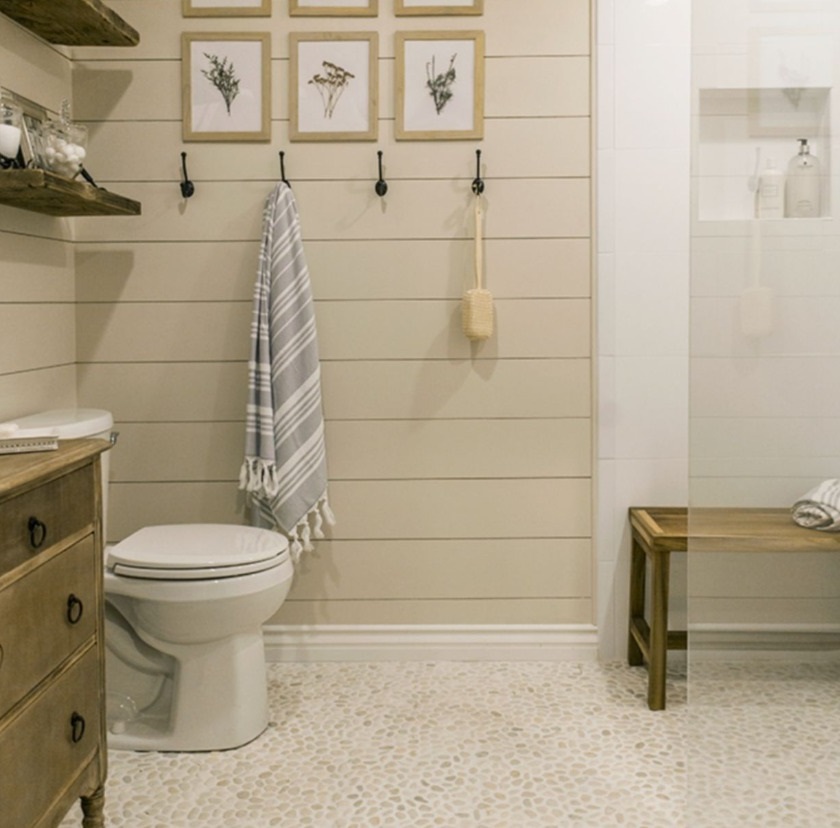
Frequently Asked Questions
- What are the advantages of using glass mosaic tiles?
Glass mosaic tiles lend a modern and sophisticated touch to any room. Their reflective properties create a sense of depth and brilliance, making a room feel more spacious and inviting. Additionally, glass tiles are easy to clean and maintain, making them an excellent choice for bathrooms and kitchens.
- Can ceramic mosaic tiles be used in high-traffic areas?
Certainly, ceramic tiles are extremely durable and can withstand wear, making them perfect for high-traffic areas. Ceramic tiles are also easy to clean, which is an important consideration for rooms that receive heavy use.
- Can stone mosaic tiles be used outdoors?
Certainly! Stone mosaic tiles, such as marble, slate, and limestone, are perfect for outdoor applications. They are naturally durable and can withstand a variety of weather conditions, making them perfect for patios, walkways, and pool areas.
- How do I select the right mosaic design for my space?
When choosing a mosaic design, consider the overall style and theme of your space. Choose colors and patterns that complement your existing decor and create the desired ambiance. You can also seek inspiration from interior design magazines, websites, and social media platforms.
- Can I combine different types of tiles in one mosaic design?
Yes, combining glass, ceramic, and stone tiles in one mosaic design can create a stunning and unique look. The difference in materials creates visual appeal and adds dimension to the entire design.
